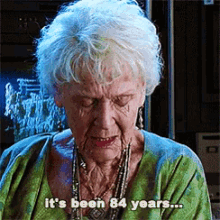Part I: Brainstorms & Bibles
Part II: An Outline of How I Outline
Part III: Drafting & The Secrets of Time Management
This might be ~controversial~ but I don’t think I would still be writing if it weren’t for the social aspect. I love talking shop with people, I love reading what others have written and sharing my own work, and I love, love incorporating (or not incorporating!) the feedback of others into my work. I wasn’t always like this—like most, I used to have massive anxiety in regards to sharing my writing at all. The pain of 13 full requests sort of killed that for me, though.

So, yeah, today’s post is all about teamwork! Specifically, working with critique partners, alpha readers, and beta readers and how they can make or break your work.
I won’t be talking as much about how to find with critique partners and alpha/beta readers, because that would take up 3k words. I’m only going to talk about how I use readers and CPs to actively improve my work.

part 1: types of readers
Alpha readers read the earliest version of your draft that you’re willing to share. I have exactly two, and they’re close friends of mine who I trust to give me the dirty truth, but also not get hung up on the stupid little mistakes. My alpha readers tend to stick with me through every part of the process post-drafting: depending on their availability, I’ll keep sending them updated versions of the book and see if the changes vibe with them. They’re not writers, which is fine because I’m looking for large-scale feedback: readability, coherency, cohesion, and ‘is this dumb?’ My alpha readers’ feedback tends to be less structured as well. I’ll often just have a shared Google Doc with the 3 of us so they can leave comments directly on the manuscript and shriek at me through chat.
Beta readers tend to be fellow writers, but aren’t always. I find mine through Twitter, and screen as best as I can! Depending on the scope of the project & the willingness of the masses, I’ll have as many as 2-8 beta readers on a project.
Please remember that beta readers are doing you a massive favor and donating their valuable time—please treat your readers with respect, even if you don’t agree with their feedback! I’ve had a couple of writers react negatively to my feedback, even when I actually enjoyed their work, and it’s always a super uncomfortable experience. If you’re not ready to hear the feedback, don’t ask people to read your work! Beta readers exist to help you figure out issues that you wouldn’t see otherwise, not to praise your genius and make you feel better about yourself.
Critique partners are fellow writers who you have established a sort of give-and-take relationship with. I’m… shit at this, and these relationships can be incredibly challenging to maintain, but they’re well worth the effort in my opinion! I tend to expect more serious and constructed feedback from CPs, but that varies from person to person. You should also be critiquing your CPs’ work as well!
part 2: the nitty gritty (getting started)
Before shooting off your manuscript all willy-nilly, be sure to clearly and communicate with your potential alpha/beta reader or critique partner what you’re looking for in terms of notes. You should already have a basic idea of what weaknesses your manuscript has, but ideally your readers will be able to root out other issue as well.
-General feedback? (Enjoyability, plot, etc?)
-Pacing?
-Character arcs?
-Worldbuilding?
…and etcetera. Different beta readers have different strengths, which means more readers = better! However, be careful about getting overambitious with the number of people you have reading your manuscript. Diversity of opinion can be overwhelming in large numbers, and getting 20 freakin’ edit letters sounds like a nightmare. Space out your readers, and make sure at least a couple of trusted people are reading multiple versions of the manuscript, so you have some sense of how you’re progressing.
When it comes to actually delivering feedback, I tend to work with readers in one of two ways:
As aforementioned, my alpha readers are welcome to just comment directly on the manuscript through something like Google Docs. This makes it considerably more difficult to sift through feedback, but it is more instant and honest, and can help you more accurately pinpoint problem areas. Plus, it’s usually a lot of fun, which helps ease me through the initial anxiety of sharing my work with others. After this initial feedback round, I’ll typically jump into a revision or rewrite before approaching betas and CPs.
For beta readers and CPs, I tend to prefer an edit letter style of feedback. They read my entire manuscript and type up what worked for them and what didn’t. This is extremely helpful for big picture fixes, particularly pacing, tone, and plot.
Of course, some people prefer to do a combination of both types, or have their own style entirely! I’m super flexible on this personally and don’t mind, but it’s important to clearly communicate your preferences from the start.
part 3: the eternal night (or, waiting on that email)
While you’re waiting on people to read and respond, patience is key. Seriously, if you’re planning on pursuing traditional publishing at any point in your life, learn how to wait. Pick up a hobby. Knit a scarf, or one of these baby bird nests for your local wildlife rehab!
I recommend holding back until all or most of your beta feedback comes in before you actually tackle feedback-based revision. Shoot off some thank you notes, work on something else, and don’t you dare open your freakin’ manuscript until you know exactly what you’re going to fix and how. (see below)
part 4: compile feedback and scream in despair
Okay, is all your feedback in? Good. Read through it all carefully, then take a couple days to mull it over. Again, it’s okay to feel mildly disappointed that your readers didn’t unanimously agree that your book was a flawless masterpiece that will snag you 7-figure book deal and allow you to settle comfortably on a remote Greek island with your hot celebrity of choice. (Daisy Ridley, please call me.) Drink, if you have to.
Once your heart has recovered, take a look at your feedback again, and read through it again. Then pull up a notebook and start organizing it. All of it. Even if you don’t agree with the note, write it down anyway.
You’re probably going to be getting a lot of information at once, but try to focus on the following:
-recurring comments. Positive AND negative. What do people seem to like and dislike the most? Little things, too, like specific lines or side characters.
-plot-related critique. If your readers are pointing out that certain plot choices don’t make senes or seem too cliché, write that down. If a particular twist seems to work well, write that down too.
-character-related critique. This tends to be a lot more subjective, as you can’t really control how an individual will react to a character. But look past opinions and try to get to the root. Are people not responding to this character because their decisions are irrational and don’t make sense? Or are they too grim to relate to?
Once this is all sorted, try your best to chart out your feedback chronologically and by chapter. With Excel, if that helps. Some chapters won’t have any notes (hellooo, chapter 2 of ARI’S GUIDE ;)), but others will have tons. This can help you determine where your problem areas are. For me, it’s almost always the last half of Act 2. Oh, second act sag. I will defeat you one day.
part 5: reviewing your feedback
Now that your feedback is sorted, it’s time to start figuring out whether you’re going to apply it or not. This can be a Process.
Sometimes you’re straight up not going to agree with another person’s feedback. And that’s okay! People are wrong sometimes. In the end, you get the final say. You’ve just got to do the utmost to ensure that your final say is the best possible say in regards to your manuscript.
However, if you think all of the criticism you’ve received is blatantly incorrect, maybe take some extra time before circling back around to your feedback charts. Yes, I know, it’s tough to hear, but you’ve got to square up. Detach your emotions from your book baby and try to see where the criticism is coming from. Even if the feedback-er might seem wrong at first glance, if they’re taking issue with a particular scene, there’s a 9/10 chance that something is wrong with the scene.
For example, one of my readers pointed out that they took issue with the worldbuilding set-up at the beginning of TIGER. They said it was boring and they skimmed—this indicated a pacing issue to me, but the scene is fairly well-paced, if a bit slower due to the nature of the book. Then I realized that what the set-up actually lacked was conflict. I rewrote the scene with conflict, and it drastically improved, helping better establish both the character and her place in the world while still setting up the world. See? It’s like solving a mystery.
part 6: plan of attack
Okay, you’ve got it all! A good range of feedback, chronologically arranged in an Excel sheet for ease of access. Now what?
Once I have my materials handy, I allow myself to open up my manuscript again and start reading through it, this time taking notes in the doc with both my readers’ feedback and the own edits I devise along the way. Because now that you’ve had enough time and distance from your manuscript, you’re going to notice some shit.
After that’s done, I now have a solid grasp on my plan of attack. Sometimes the necessary revisions are extensive enough to warrant a full rewrite—but usually, I can isolate a couple of problem areas or chapters and just rewrite those. Either way, I generally end up rewriting something, but that’s a topic for next week. 😉
That’s all for now! This was kind of a long one, whoops. Anyway, let me know how you tackle feedback from CPs and readers! Next week I’ll be covering the final stage of my writing process: R E V I S I O N S.
xx
twitter: @sweater_giraffe
instagram: @lynndjung






Leave a comment